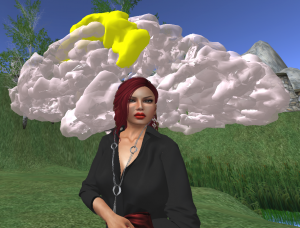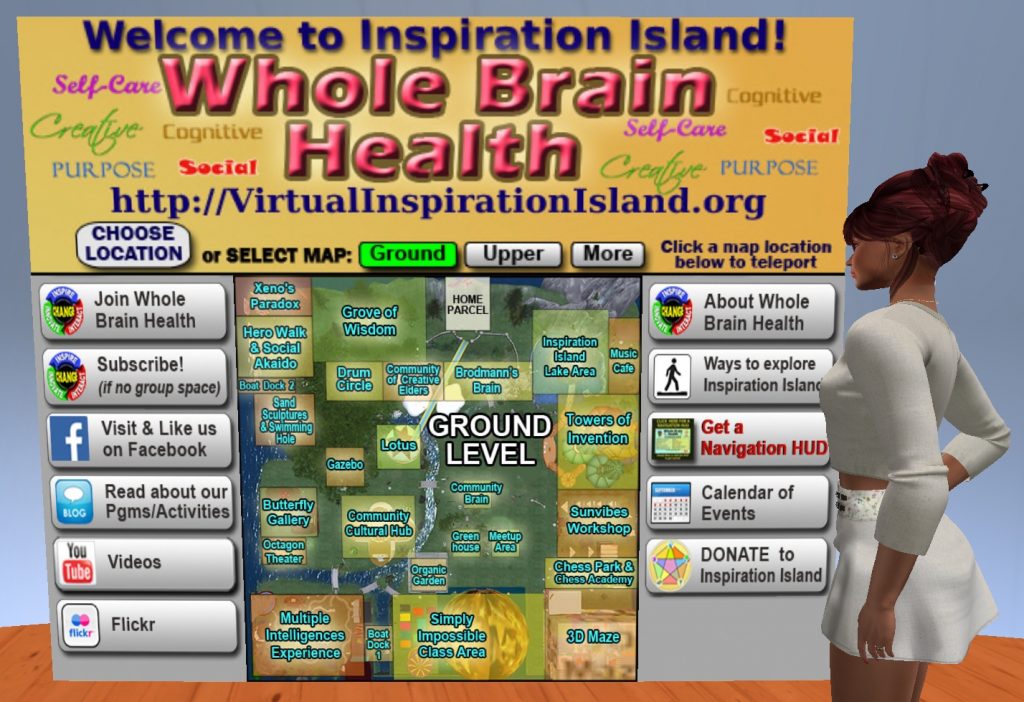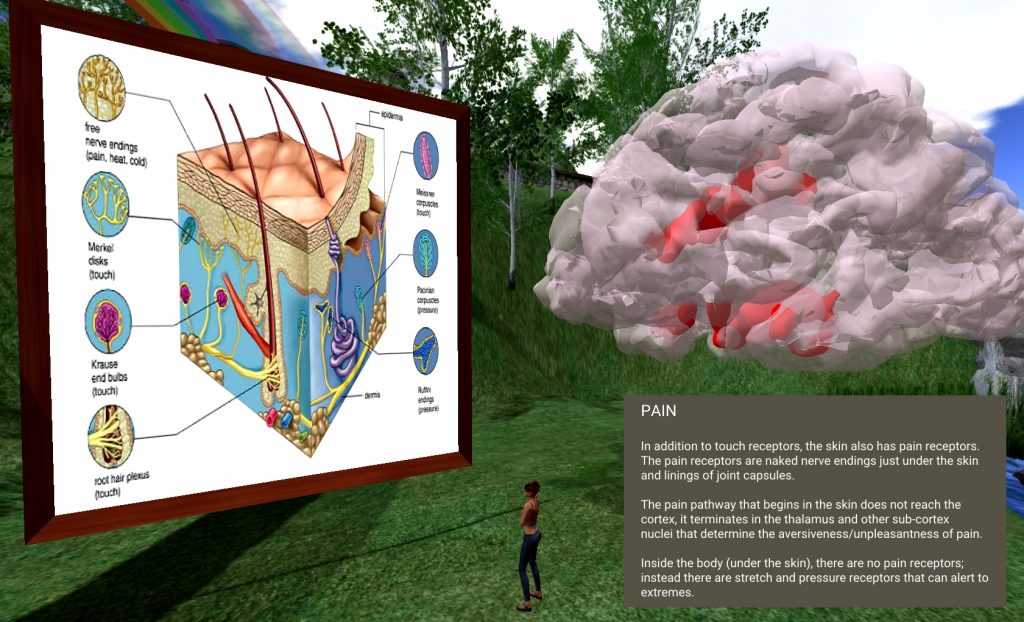
Did you realize that the variegated surface of our brains is actually divided into a number of distinct areas? Korbinian Brodmann identified 52 different cell patterns in the cortex in 1909 and today we know the functions associated with most, if not all, of them.

My friend, Osan Gar, set about to develop a teaching tool to illustrate these areas and their functions. What she created is so interesting and clever that I must share it with y’all.
Now Dr. Gar is qualified to undertake this task. She has a degree in medicine and is a board certified neurologist in the United States. Being qualified did not make the task easy. She has spent three years developing her activity.
Her current product is shown in the photo below. It is called Brodmann’s Brain and it has three components. First is a 3D model of the brain where all 52 Brodmann areas are separate objects and can be highlighted in colors for easy identification. Second is a media board that displays a picture or graphic helping to illustrate the brain area currently highlighted. And third, displayed in local chat, is text also relevant to the picture and brain part.
The brain itself was made by converting MRI scans of a real person’s brain into files that could be converted into mesh objects. The DICOM MRI files were converted to DAE files. Then… “the DAE files were imported to Blender to get size and shape right, then imported to SL where they were assembled and linked.” Technical assistance was provided by Brain Voyager in Maastricht, Netherlands and Ghaelen D’Lareh.
It’s all tied together with a script that Gar developed with the assistance of Francisco Koolhoven. It is on permanent display at Inspiration Island. “The lecture cycles automatically every 60 seconds or you can left click anywhere and choose topics from the menu. The correct brain regions light up, the local chat explains and the image shows what’s happening,” explained Gar.
I think it’s brilliant.
Gar said, “My original idea, when I came to SL 3 years ago, was for a planetarium. The first Sci Circle presentation used that model. It is currently on You Tube. The planetarium was a big brain sphere you could walk inside, but it wasn’t real. This one uses real brain sections.”
“To me the main point of what I tried to do here is that we have been thinking about our brains incorrectly, assuming it is a mass of unconscious calculators in all directions. The cooler truth is our cortex is a huge memory map, different cell pattern regions (Brodmann Areas) have different response types like vision, hearing, and motor skills. Each region records its piece of the experience being memorized. These maps, maybe only a few hundred, are then recalled, not recreated anew, each time.”
Gar has a hypothesis that BA25 is our existential center. Gar and her colleagues have some current research, not ready for publication yet, that shows BA 25 plus two other areas to be the only active areas of the brain in deep meditation. Based on these results, Gar hypotheses, “… at the farthest extent of evolution, is the ventro-medial prefrontal cortex and the nearly mystical Brodmann Area 25. It is small and at the near center of the brain. In mental silence, when all movement stops, and all sensations fade, and no tasks are pursued, BA 25 awakens – our self without sensations, or memories, or thoughts.” She also qualifies this to say, “… but theoretically, I believe even BA25 can inactivate during deepest meditation” Thus, there are tiny moments when even our deepest self is quiet.
References and Resources
- Inspiration Island – Brodmann’s Brain and their web page.
- Jacobs K.M. (2011) Brodmann’s Areas of the Cortex. In: Kreutzer J.S., DeLuca J., Caplan B. (eds) Encyclopedia of Clinical Neuropsychology. Springer, New York, NY.
- The brain model is based on MRI files available at the McConnell Brain Imaging Centre, McGill University.
- Blender. A free and open source 3D creation suite. It supports the entirety of the 3D pipeline – modeling, rigging, animation, simulation, rendering, compositing and motion tracking, even video editing and game creation.
- On May 31st, OsanGar, Thuja Hynes and Lissena Wisdomseeker led an interactive tour through the Brodmann’s Brain and its functions. This presentation will soon be available as a video on the Science Circle web site.
- View a presentation of Gar’s earlier version of the brain on YouTube.

Visits:4

